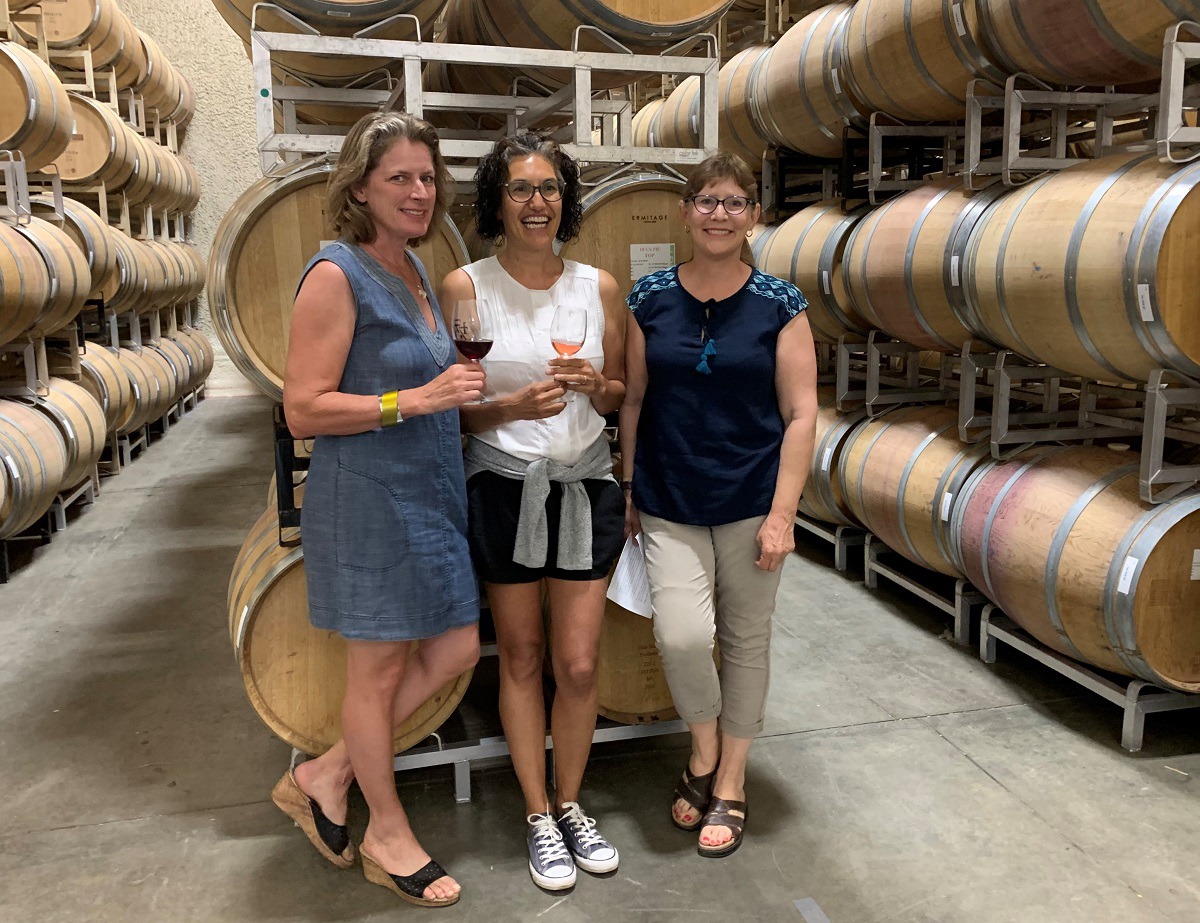Sense of Place for Naramata Bench Vineyards Celebrated at Naramata Wine Vault
By Roslyne Buchanan.
Vineyard owners, grape growers, winemakers, wineries and staff, industry partners and media gathered Sunday at the Naramata Wine Vault. On the scenic drive along Naramata Road to arrive there, pretty much like every time I take that route, I marveled at the beauty of lush vineyards, Okanagan Lake and the rugged hilltops.
The Open House was an occasion to celebrate the Naramata Bench as an approved designation on front labels of wine bottles. The audited process is to truly and honestly reinforce a sense of place for the region. It is home to more than 40 distinct wineries and at least four times that in vineyards.

The official government announcement was made mid-May 2019 to approve the creation of a “Naramata Bench Sub-Geographical Indicator” regulated by the BC Wine Authority (BCWA). Naramata Bench became the third region to receive the Sub-Geographical Indicator following Golden Mile Bench in 2015, Okanagan Falls in 2018, and joining Skaha Bluffs this Spring.
It is an important milestone in the coming of age of the BC wine industry and as Sandra Oldfield, who advocated for that earlier Golden Mile Bench designation pointed out it simply confirms, “Where grapes are grown matters.”

For those of us who enjoy wine and want to know the important details of the contents, it offers truth in labelling. Internationally, Europe has been defining specific regions and protecting the names as the “appellation d’origine contrôlée” for ages. The procedure is also well established in countries like United States as the American Viticultural Appellation (AVA) system.
Cynthia Enns, Laughing Stock Vineyards, set wheels in motion more than 12 years ago by starting the conversation within the industry and the wine authority. Key committee members also included Kathy Malone, Hillside Winery; Gavin Miller, Upper Bench Winery & Creamery; Valeria Tait, Bench 1775; and Bob Tennant, Terravista Winery.

In thanking everyone who played a part, committee member Malone gave particular acknowledgement “to the visionaries who planted vinifera varieties and advocated for farmgate licensing, setting the course for BC to be able to compete on the world stage. After 30 years of experimenting with many grape varieties in many micro-climates and terroirs, we now share our journey of discovery with the public by offering distinct geographic information on our labels.”
In true Naramata Slow style, wineries brought selections of their wines to share, many pouring wines of their colleagues in the area. Even out-of-region wineries that are Naramata Wine Vault customers were encouraged to pour giving some us our first opportunity to taste the Pinot Gris from Phantom Creek Estates on the Black Sage Road, Oliver.

The Naramata Wine Vault, located in the former B.C. Tree Fruits packing house which stood dormant for years, provides storage service for Okanagan wineries, distilleries, and cideries after an extensive renovation by owners David Enns, Mik Ball, Robert Gritten and Steven Jaeger.
Invited by the Naramata Sub-GI Initiative to attend the Naramata Bench Wine Industry Open House, the Naramata Bench Wineries Association (NBWA) brought along an enlarged map of the area. NBWA provided marker pens and encouraged vineyard owners and wineries to indicate their location on the map and to sign it. It was a fun exercise for those in attendance to gain perspective on the wine-growing region.

Why It Is Meaningful?
Of course, wineries are free to produce wines from grapes grown in other regions. As enthusiastic consumers, though, we want to know all about our wine. How wineries and winemakers work with the grape juice, whether they take a minimalist approach or more aggressive stance, make a difference. Most folks agree the heavy lifting for what results in great wine happens in the vineyard. Clearly, the flavour is heavily influenced by where and how the grapes were grown. So many factors such as climate, soil composition, wind, sunlight and reflection are involved.
To use an official Geographical Indicator or Sub-Geographical Indicator, each wine requires BCWA certification and records are regularly audited. It ensures truth in labelling and I, for one, appreciate that level of rigour.
I’ll toast to that!
Featured photo: Naramata South courtesy of Naramata Sub-GI Initiative.











